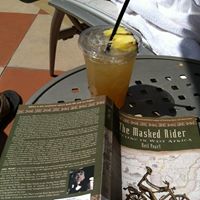Brett J Hoover
from Mansfield, PA
Brett Hoover Phones & Addresses
- Mansfield, PA
Work
-
Company:Bronco oilfield servicesNov 2013
-
Position:Fluid pump operations
Education
-
School / High School:Mansfield University- Mansfield, PA
-
Specialities:B.S. in Physics and Mathematics
Isbn (Books And Publications)
-
Morning Prayer, Evening Praise
view source -
Author:Brett Hoover
-
ISBN #:0809137208
-
Soundbyte Spirituality: Sayings To Awaken Faith
view source -
Author:Brett Hoover
-
ISBN #:0809140799
Name / Title
Company / Classification
Phones & Addresses
RESOURCE VISION, LLC
Resumes

Aircraft Maint Technician
view sourceWork:
Cuesta Aviation
Aircraft Maint Technician
Aircraft Maint Technician

Brett Hoover
view source
Brett Hoover
view source
Brett Hoover
view source
Brett Hoover Middlebury Center, PA
view sourceWork:
Bronco Oilfield Services
Nov 2013 to 2000
Fluid pump operations Corning Incorporated
Corning, NY
2006 to 2012
Senior Technologist - Optical Physics Corning Incorporated
Corning, NY
1998 to Aug 2003
Operations Associate-Subject Matter Expert
Nov 2013 to 2000
Fluid pump operations Corning Incorporated
Corning, NY
2006 to 2012
Senior Technologist - Optical Physics Corning Incorporated
Corning, NY
1998 to Aug 2003
Operations Associate-Subject Matter Expert
Education:
Mansfield University
Mansfield, PA
B.S. in Physics and Mathematics
Mansfield, PA
B.S. in Physics and Mathematics
Us Patents
-
Pre-Form For And Methods Of Forming A Hollow-Core Slotted Pbg Optical Fiber For An Environmental Sensor
view source -
US Patent:8133593, Mar 13, 2012
-
Filed:Jun 26, 2008
-
Appl. No.:12/146928
-
Inventors:Joel Patrick Carberry - Elmira Heights NY, US
Michael Thomas Gallagher - Corning NY, US
Brett Jason Hoover - Middlebury Center PA, US
Joseph Edward McCarthy - Addison NY, US -
Assignee:Corning Incorporated - Corning NY
-
International Classification:B29B 7/00
D02G 3/00
B32B 17/06
G02B 6/02 -
US Classification:4285428, 428373, 428375, 428426, 428428, 385123
-
Abstract:A preform for forming a hollow-core, slotted photonic band-gap (PBG) optical fiber for use in an environmental sensor, and methods of forming such a fiber using the preform are disclosed. The preform comprises a slotted cladding tube that surrounds a slotted, hollow-core PBG cane. The slots in the cladding tube and PBG cane are longitudinally formed and substantially aligned with each other. When the preform is drawn, the slots merge to form an elongated side opening or slot in the resulting hollow-core PBG fiber.
-
Methods For Determining The Rotational Characteristics Of An Optical Fiber
view source -
US Patent:20110265520, Nov 3, 2011
-
Filed:Apr 28, 2010
-
Appl. No.:12/769288
-
Inventors:Xin Chen - Corning NY, US
Brett Jason Hoover - Middlebury Center PA, US
Ming-Jun Li - Horseheads NY, US
Anping Liu - Big Flats NY, US
Jody Paul Markley - Watkins Glen NY, US -
International Classification:G01N 23/20
-
US Classification:65378
-
Abstract:A method for determining a rotational characteristic of an optical fiber is disclosed. The method includes forming an orientation registration feature in an optical fiber preform and drawing an optical fiber from the preform such that the orientation registration feature formed in the optical fiber preform is imparted to the optical fiber. The optical fiber is then rotated about a longitudinal axis and the direction of rotation is periodically reversed. An orientation signal of the optical fiber is determined based on a position of the orientation registration feature as the optical fiber is rotated. A rotational characteristic of the optical fiber is then determined based on the orientation signal.
-
Multi-Core Optical Fiber Ribbons And Methods For Making The Same
view source -
US Patent:20120114292, May 10, 2012
-
Filed:Oct 14, 2011
-
Appl. No.:13/273495
-
Inventors:Brett Jason Hoover - Middlebury Center PA, US
Ming-Jun Li - Horseheads NY, US -
International Classification:G02B 6/02
C03B 37/027
C03B 37/018
G02B 6/028 -
US Classification:385124, 385126, 65386
-
Abstract:Multi-core optical fiber ribbons and methods for making multi-core optical fiber ribbons are described herein. In one embodiment, a multi-core optical fiber ribbon includes at least two core members formed from silica-based glass and oriented in parallel with one another in a single plane. Adjacent core members have a center-to-center spacing ≧15 microns and a cross-talk between adjacent core members is ≦−25 dB. In this embodiment each core member is single-moded with an index of refraction n, and a core diameter d. In an alternative embodiment, each core member is multi-moded and the center-to-center spacing between adjacent core members is ≧25 microns. A single cladding layer is formed from silica-based glass and surrounds and is in direct contact with the core members. The single cladding layer is substantially rectangular in cross section with a thickness ≦400 microns and an index of refraction n≦n.
-
Two-Core Optical Fibers For Distributed Fiber Sensors And Systems
view source -
US Patent:20140042306, Feb 13, 2014
-
Filed:Oct 24, 2012
-
Appl. No.:13/658991
-
Inventors:Brett Jason Hoover - Middlebury Center PA, US
Ming-Jun Li - Horseheads NY, US
Shenping Li - Painted Post NY, US -
International Classification:G02B 6/02
G01J 1/04 -
US Classification:25022714, 385 12
-
Abstract:A two-core optical fiber is provided for use in Brillouin distributed fiber sensor applications and systems. The two-core fiber includes a first and second core. Each core is configured to exhibit a Brillouin frequency shift greater than 30 Mhz relative to the other core. Further, each core possesses temperature and strain coefficients that differ from the other core. The cores can be configured to produce Brillouin frequency shift levels of at least 30 Mhz relative to one another. These differences in shift levels may be effected by adjustment of the material compositions, doping concentrations and/or refractive index profiles of each of the cores. These optical fibers may also be used in BOTDR- and BOTDA-based sensor systems and arrangements.
-
Preferential Etching Method Of Forming Microstructure For An Optical Waveguide
view source -
US Patent:7346250, Mar 18, 2008
-
Filed:Mar 30, 2007
-
Appl. No.:11/731633
-
Inventors:Michael Thomas Gallagher - Corning NY, US
Daniel Warren Hawtof - Corning NY, US
Brett Jason Hoover - Middlebury Center PA, US -
Assignee:Corning Incorporated - Corning NY
-
International Classification:G02B 6/04
G02B 6/02 -
US Classification:385125, 385115
-
Abstract:A method of fabricating a microstructure for an optical waveguide such as a photonic bandgap fiber is provided. The method includes the steps of assembling a stack of capillary tubes having substantially identical dimensions, fusing and redrawing the stack into a preform having a plurality of parallel holes of equal diameter, selecting a pattern of the holes for etching in order to increase their diameter, and plugging the unselected holes at one end of the preform against the flow of a pressurized etching fluid. Such plugging of the unselected holes is accomplished applying a layer of a gel-like sealant over the end of the preform, and then pushing the sealant into the holes to form sealant plugs in all of the holes. The sealant plugs are then removed from the selected holes by punching the sealant plugs out of the selected holes. The selected holes are then etched by conducting a pressurized flow of etching fluid to the end of the preform such that etching fluid flows only through the pattern of selected holes.
Googleplus

Brett Hoover

Brett Hoover

Brett Hoover
view source
Brett Hoover
view source
Brett A Hoover
view source
Brett Hoover
view source
Brett Hoover
view source
Bret R Hoover
view source
Brett Hoover
view source
Brett Hoover
view sourceMyspace
Youtube
Flickr
Classmates

Brett Hoover
view sourceSchools:
Miles MacDonell Collegiate Institute Winnipeg Palestinian Territory, Occupie 1994-1998
Community:
Donnie Colvin, Lucie Snow, Oksana Sandra

Brett Hartley (Hoover)
view sourceSchools:
Rosedale Christian Academy Winchester VA 1979-1983, Ironton Christian Academy Ironton OH 1979-1983
Community:
Deborah Blair, Teresa Lehn, Victoria Remy, Rebecca Gambill, Jimmy Smith

Brett Hoover
view sourceSchools:
Wellsboro Area High School Wellsboro PA 1991-1995
Community:
Dixie Matson, Lori Bosek

Brett Hoover, Cactus High...
view source
Norman North High School,...
view sourceGraduates:
Christopher Chris (2003-2007),
Kenneth Smith (1995-1999),
Jason Bement (1998-2002),
Thomas Klein (2005-2009),
Brett Hoover (1998-2002)
Kenneth Smith (1995-1999),
Jason Bement (1998-2002),
Thomas Klein (2005-2009),
Brett Hoover (1998-2002)

Wellsboro Area High Schoo...
view sourceGraduates:
Kimberly Heatwole (1986-1990),
Jessica Pennell (1996-2000),
Tanya Krystoff (1992-1996),
Rebecca Sadler (2002-2006),
Brett Hoover (1991-1995)
Jessica Pennell (1996-2000),
Tanya Krystoff (1992-1996),
Rebecca Sadler (2002-2006),
Brett Hoover (1991-1995)
Get Report for Brett J Hoover from Mansfield, PA















